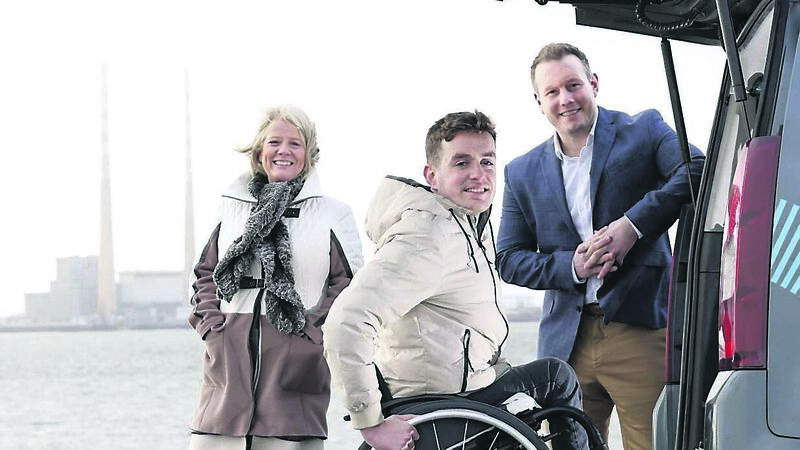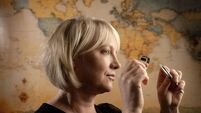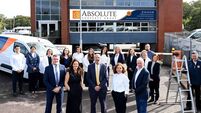We have to make society more accessible for disabled people

At Kent station, I read the digital display to find out what platform to go to and hopped onto the carriage with ease.
The conference was about accessibility and transport and the barriers people with disabilities encounter every day getting from A to B.
As panellists shared their experiences, I realised just how privileged my journey to the conference had been.
Paralympian swimmer Patrick Flanagan spoke about the indignity of having to ask strangers to lift him onto the Dart, because a ramp which he had ordered a day in advance to help him disembark never materialised.
Elaine Howley, a disability advocate with Sage Advocacy who has had a visual impairment since birth, spoke about how she doesn’t have the luxury of deciding to drive to work, or cycle if it’s a nice day, and she relies entirely on public transport to get to where she needs to go.
She also explained how difficult it is to navigate the world with a visual impairment when cafés and restaurants have filled the footpaths with outdoor dining furniture and bike lanes have sprouted in places that were always exclusively for pedestrians.
The trend to decorate premises in 50 shades of grey and black might tick the hipster box, but does not tick the accessibility box to provide the high contrast that people with visual impairments need to navigate.
Jack Kavanagh, who suffered a cruel spinal cord injury in 2012 and was left with 15% muscle function, spoke about how, from the moment we enter the world, our environment is shaping us, and our abilities and potential are expressed or depressed, enabled or disabled by the world we live in.
If we were to exclude women or people of colour from places in the way that we exclude some people with disabilities, there would be uproar.
The right for people with a disability to be able to lead full, independent lives and get to work, attend college, enjoy a pint with friends, or go on a date is continually undermined by the built environment and transport network. Broken, uneven footpaths, raised kerbs at crossings, broken traffic signals, and inaccessible buses are all obstacles to a person with mobility issues.
I’ve recently been involved in a citizen science project called Crowd4Access, run by the Insight Centre for Data Analytics. The project brings data scientists and citizen scientists together to try and map Ireland’s footpaths, so that people with mobility issues will, in the future, be able to look at an online map and work out an accessible path to get to their destinations - a sort of Google Maps for footpaths
I’ve really had my eyes opened to the world of flushed and raised kerbs, tactile paving (the bumpy bits of footpaths at crossings) and refuge islands. Now, everywhere I look I see examples of the dire need for improvements to footpaths and pedestrian crossings in our streets and neighbourhoods.
I first became aware of how inaccessible some places were when, as a new parent, I tried to venture out with a buggy. How many times have you helped a parent lift a buggy up and down steps? Try doing that with a 6ft man in a wheelchair and you’ll appreciate why wheelchair-accessible entries to all businesses and public buildings should be a basic requirement.
Census 2016 showed there are 54,810 people in Ireland who are blind or vision-impaired. These are not insignificant numbers.
It’s just not good enough in 2022 that so many people are excluded from going to where they want to go. Apart from unnecessarily limiting disabled people’s lives and potential, it also limits and deprives workplaces, communities and society as a whole, when these people are not fully participating in life and sharing their abilities, talents and wisdom.
The focus of the conference was on transport and there have been big improvements in the last decade in terms of accessibility in bus services.
Representatives from Dublin Bus and Bus Eireann spoke about how their fleets have become accessible, with low floor buses, high contrast interiors and audio announcements.
Allen Parker, the Chief Customer Officer with Bus Eireann, spoke about spending a day in a wheelchair to get a sense of the challenges faced by some of his customers.
Bus Eireann will soon be trialling the Travel Assistant Scheme, which has been a huge success for Dublin Bus, on Cork buses.
There are many barriers to overcome before we have a society that is fully inclusive and accessible but greater awareness by the wider public of the obstacles faced by people with a disability, along with greater commitment and prioritisation by companies, businesses and government, will help ensure access for everyone, everywhere.







 App?
App?




